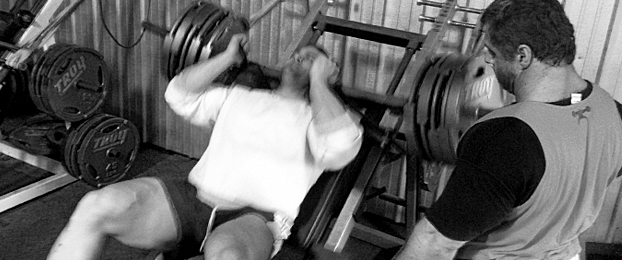
I know that most of you reading this are die hard, big-backed, squat junkies, and that’s fine. But what if I told you that, due to circumstances, I've been forced to change the way I train my lower body? And that I'm getting more upper body benefit because of the change?
I had played around with Mike Boyle’s concepts regarding abandoning the back squat and going the single leg route for my clients and athletes, but I then fell back in love with the Westside protocol. Make no mistakes, I think Louie is the man and his methodology for getting an athlete stronger is the best in the world. However, because of injury and wanting to make sure I isolated that leg as much as possible— to prevent an injury from happening on the other leg, I've been training with 80 percent single leg exercises.
Because of the bilateral deficit built into the central nervous system, you can produce much more force when training just one limb than you can by training both at the same time. With single leg training, you also get a much higher activation of the adductors, glutes, and quadratus lumborum muscles. Factor these things in and you get much more time under tension and higher force outputs per leg, which will lead to greater strength and size. But that isn't what I'm here to discuss. I'm talking about getting a bigger upper body by single leg training, particularly when holding the weights in your hands.
If you're on an upper/lower split routine, you're directly stimulating the upper body twice a week. I remember listening to a professor in college talk about a study in which they strapped weights to a bird's wings. The bird's wing muscles grew 80 percent in a certain amount of time from just having the weights attached to its wings. There wasn't any lifting going on. It was just added stress, kind of like holding a barbell or dumbbell in your hands. I always remembered this, and I try to apply it whenever possible. For my lower body training, I prefer the single leg movements (see my sample leg workout below), especially when holding on to the weight rather than having it on my back.
Instead of hitting the upper body just twice a week, we get extra stimulation because we're working the lower body by holding on to the weights, which means extra time under tension and stimulation for the traps, lats, rhomboids, lumbars, and quadratus lumborum. Although it isn’t direct, you're working areas that you might not otherwise train directly, such as the middle/lower traps and rhomboids. The majority of the trapezius muscles are located in the middle back. The top area, so often trained with normal shrugs, is basically the tip of the iceberg. After my last lower body workout, my back had that weird, growth-induced feeling of being slightly sore but not overly so.
Here is a sample functional lower body workout:
You'll notice that I put hex deadlifts in here. Like I said in the beginning, I aim for roughly 80 percent of my workout to involve single-leg movements. But with the deadlift, you're still getting the upper body stimulation via the weights in your hand. The deadlift really works every muscle in the body.
If you have a temperamental back, or if you're looking for a way to get some extra work in throughout the week, try single leg training while holding the weight in your hands (80 percent of the time). My legs are growing quite nicely, too. The left leg was down four inches three months ago and now it's about back to par with the right leg!









